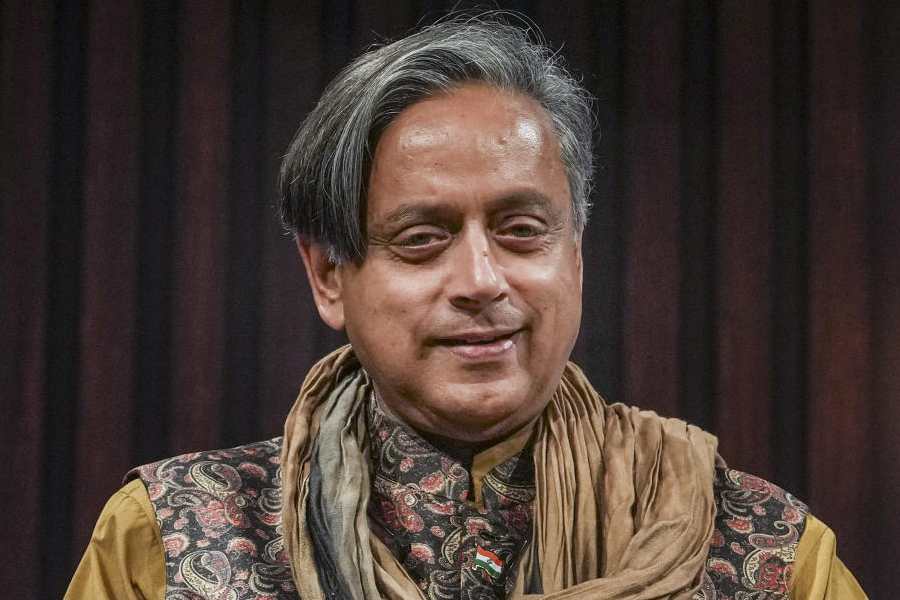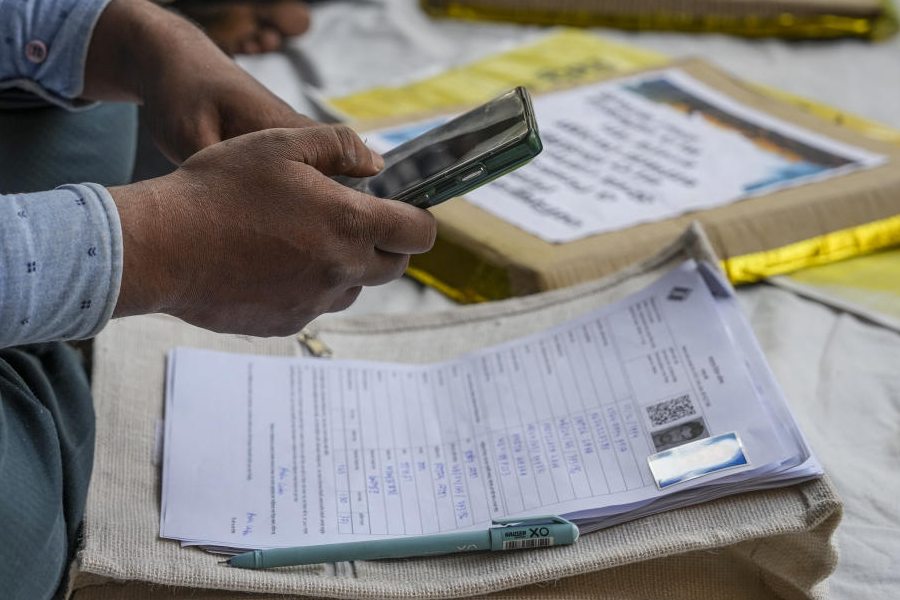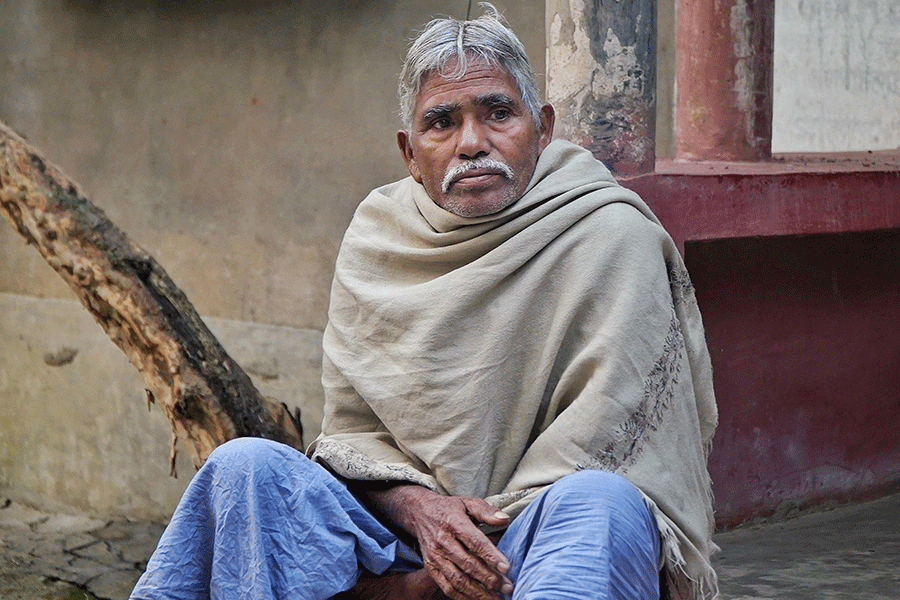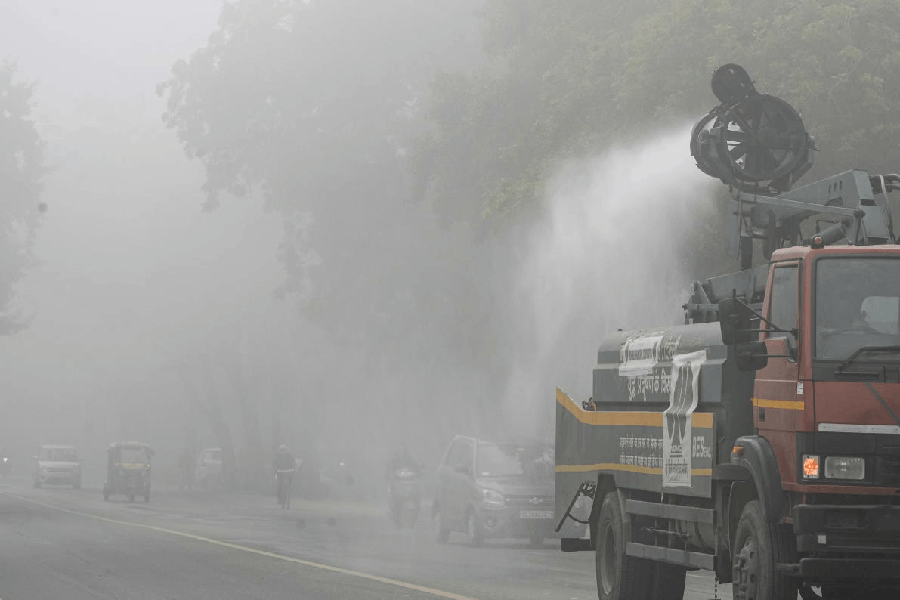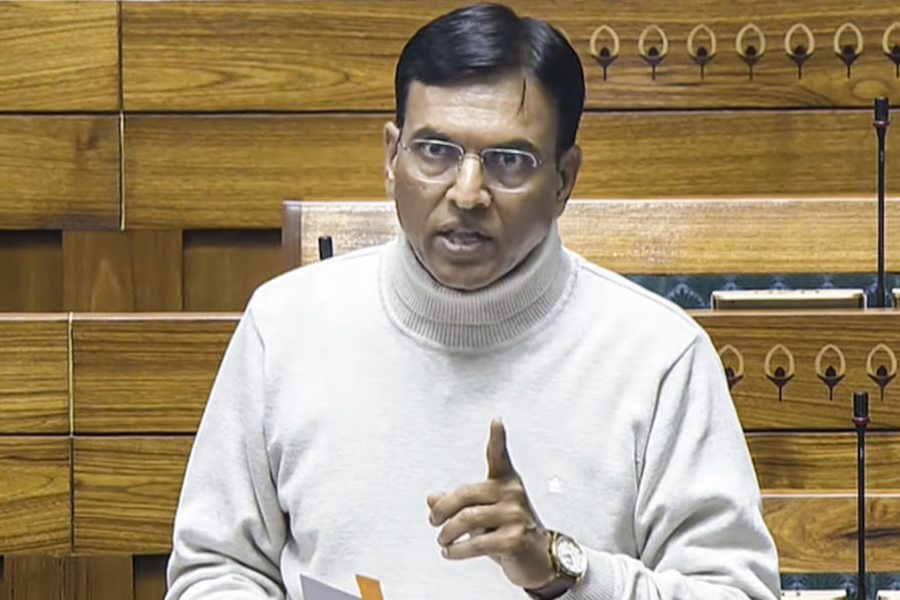 |
| The three artists at Studio 21. A Telegraph picture |
At a glance, the idea of showing together the works of Anand Prakash, Sougata Das and Satyajit Roy appears a bit baffling. However, the title of their show, Intersection, which opened at Studio 21 on Saturday, helps put their works in a certain perspective.
Based in Calcutta and Bhopal, these three young artists have been influenced by distinct academic traditions; even their styles could not be more different from one another. Yet there is a striking coherence in their works. Their sensibilities are very much the product of these times, responding to questions of identity, politics of cultural appropriation, and riddled with modernist anxieties.
Sougata Das, who is also a teacher of art history, acknowledges his debt to masters like Somenath Hore, whose printmaking inspired him to imbibe a double-edged “graphic and painterly” quality into his own work. This gives his pen-and-ink drawings the feel of relief sculptures.
One can also discern liberal dashes of Picasso’s portraits in the contorted faces in acrylic. The trick, however, lies in the way Das reinvents classic models of figurative art, adding a distinctly indigenous, even deeply personal, touch to them. Drama, Das admits, is intrinsic to his work. Often, a theatre of the grotesque seems to be unfolding among the strangest props.
An element of theatricality also informs the modestly sized canvases of Satyajit Roy, albeit more directly. Roy, who is trained in printmaking, used to be deeply interested in etching. He claims that this medium has helped him forge a personal language in his works with oil.
He draws on popular imagery from Bollywood cinema, posters, advertisements and graffiti, and turns it into photo-realist montages, though with a mischievous twist.
He sees a lot of potential in clichés and kitsch in the way these can add “entertainment value” to art if used with the right kind of panache. Like Das, Roy too mentions Ganesh Pyne as one of his models, apart from claiming affinity with the styles of Salvador Dali and Bikash Bhattacharjee.
In one painting, Amitabh Bachchan is dressed up as Sai Baba, while cartoon figures like Bantul the Great and Gablu hover on the margins. In another, Abanindranath Tagore’s masterpiece, The passing of Shah Jahan, becomes part of the history of the present as the Mughal emperor looks out, not on the Taj Mahal itself, but on the Taj Mahal hotel in Mumbai being besieged by terrorists. Roy calls this mixed-up mode “remix”.
Anand Prakash, the Bhopal-based artist, stands out in this trio not just because of his sizeable works but also for his starkly different idiom. Prakash works with acrylic, and prefers abstraction to figurative art because the former allows him to be playfully experimental. His paintings reflect various states of mind, the colours becoming visual registers for changing emotions.


